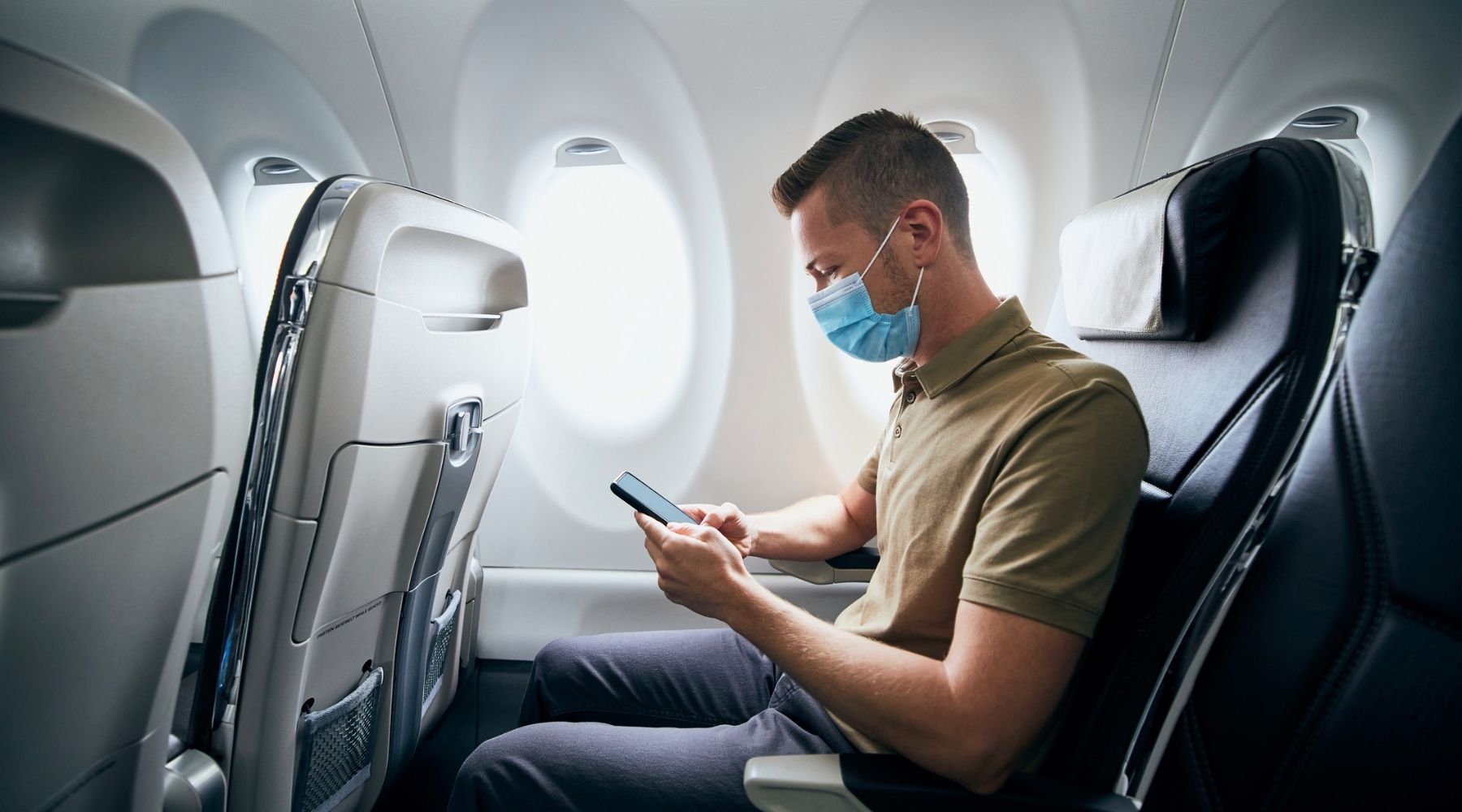Each week, OMRF Vice President of Research Dr. Rod McEver opens “Adam’s Journal” to answer a medical question from Adam Cohen, OMRF’s senior vice president & general counsel.
Adam’s Journal
A judge recently struck down the federal mask mandate on airplanes and public transportation. I have a work trip to the East Coast scheduled next week. Even though I don’t have to (unless an appeals court reverses the ruling), I’m wondering whether I should at least continue to wear a mask during air travel?
Dr. McEver Prescribes
While masks are most effective when everyone around you is wearing one, the gold standard N95 and KN95 masks will still protect against the coronavirus even when you are wearing one and others aren’t. In a 2020 lab study out of Tokyo, researchers found a tightly sealed N95 mask offered 79-90% protection from coronavirus particles.
When it comes to coronavirus transmission, planes pose a lower risk than mass transport such as buses and trains. According to the International Air Transport Association, airlines equip most modern aircraft with high-efficiency air filters, and filtration systems refresh cabin air 20-30 times an hour, making planes relatively safe when all systems are go.
Still, there’s little to no protection during boarding, deplaning or in airports themselves. And that’s a big chunk of time spent in close quarters with others, especially when we’ve seen a big bump in case numbers nationally due to the BA.2 variant.
For your trip, the safest bet would be to wear a high-quality, well-fitting N95 or KN95 mask from curb to curb.
If you’re a vaccinated and boosted person who is neither immunocompromised nor over 65, you may feel your risk for infection is low. In that case, removing the mask only while in the air (when the plane’s air filtration systems are on) could make the trip more comfortable.
Still, if you choose that route, the risk will be there. In a 2021 modeling study, researchers at the University of Illinois found passengers seated in the same row or one row away from someone with Covid-19 had a high risk of being infected with the virus.
Wearing a mask reduced that chance by 54%. To me, that sounds like a pretty good argument for donning one.
–
Do you have a health query for Dr. McEver? Email contact@omrf.org and your question may be answered in a future column!



